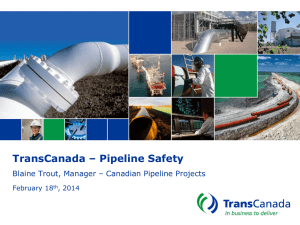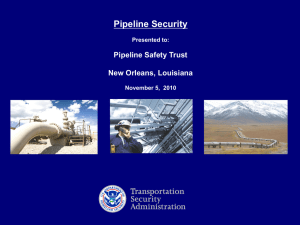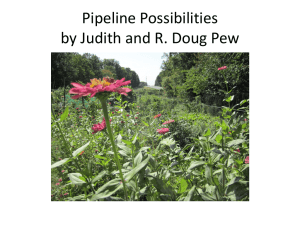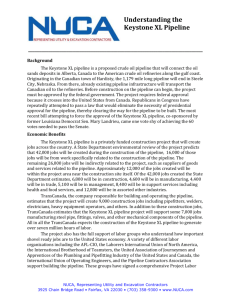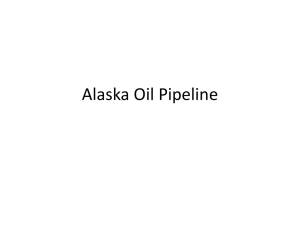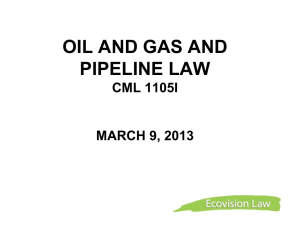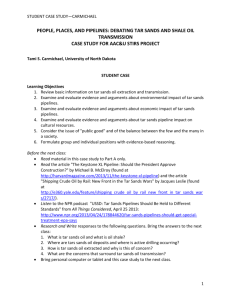Document
advertisement
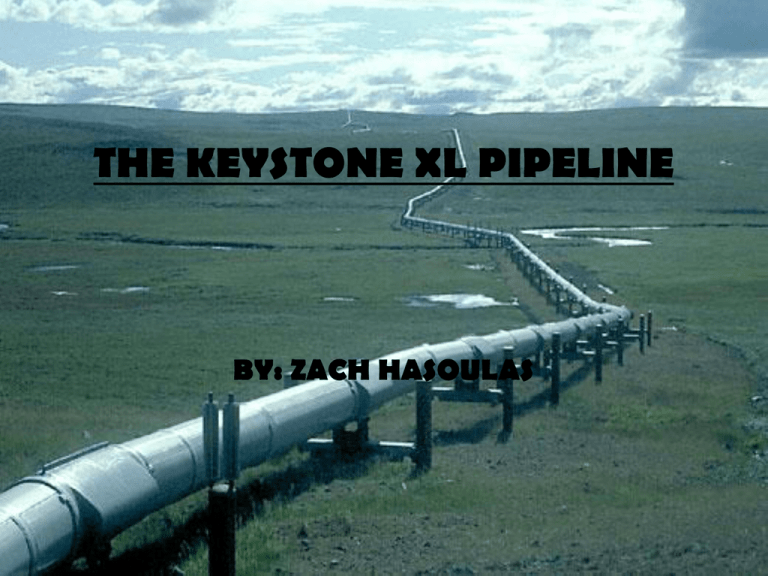
THE KEYSTONE XL PIPELINE BY: ZACH HASOULAS WHAT IS THE PIPELINE? • The Keystone XL Pipeline is a proposed extension of the original Keystone Pipeline System which initially went online in June 2010. Phase 2 was completed and went online February 2011. The Keystone XL was initially proposed in 2008 as part of a two phase project with Phase 3 having two parts existing solely within the United States while Phase 4 would be constructed as a brand new pipeline running from Alberta and joining the original pipeline in Nebraska. WHAT ARE THE MAJOR BENEFITS OF THE PIPELINE? • Local economies along the route of the pipeline will benefit from increases in tax revenues and business activity associated with temporary construction work in the area • A continuing benefit to the U.S. economy of a more stable source of consistent energy supply over an extended time period • Even with new technologies, oil discoveries, alternative fuels, and conservation efforts, the U.S. will continue to remain dependent on imported energy for the foreseeable future. Therefore, initiatives which improve the stability and security of imports are important both to the economy and to national security. • Since the U.S. cannot produce sufficient energy to meet its domestic needs, they need to obtain necessary imported energy from sources that are stable and friendly to U.S. interests. • A stable environment with supplies from reliable sources leads to lower costs, thereby passing on lower prices to the consumer. • Some aspects of the energy transportation system are nearing capacity, and future demand may be difficult to accommodate. As many of the crude oil and petroleum products pipelines in the country are operating near capacity, present day initiatives in the construction of a network of pipelines will solve demand issues in the foreseeable future. CONCERNS From Environmentalists • That the pipeline would pollute air and water supplies and harm migratory birds and other wildlife. The original route crosses the Sand hills in Nebraska, a large wetland ecosystem, and the Ogallala Aquifer, one of the largest reserves of fresh water in the world. So we took the initiative to …. Change the route and skip the Sand Hills • That portions of the pipeline will cross an active seismic zone that had a 4.3 magnitude earthquake as recently as 2002. So we took the initiative to …. Ease their mind by explaining that TransCanada has been building similar pipelines in North America for over 50 years. We also explained that the Keystone XL Pipeline will include 57 improvements above the standard requirements required by U.S. regulators, making it "the safest pipeline ever built." • About the emission of greenhouse gases to remove the crude from the oil sands. So we took the initiative to …. Explain that the oil sands account for about 0.1% of global greenhouse-gas emissions. In comparison, electrical plants that are powered by coal in the U.S. generate almost 40 times more greenhouse-gas emissions than Canada's oil sands. Geopolitical Issues • Just being plain worried So we took the initiative to …. Explain that if Canadian oil doesn't reach the U.S. through an environmentally friendly buried pipeline, then the alternative is for it to be brought in by tanker, a mode of transportation that produces higher greenhouse-gas emissions and puts the environment at an even greater risk. And to…. Explain that much of the opposition to the oil sands actually comes from foreign countries such as Nigeria, Venezuela, and Saudi Arabia, all of whom supply oil to the United States and who could be affected if the price of oil drops due to the new availability of oil from the pipeline. Economic Issues • It wouldn't do any thing for our economy but bring it down by wasting money So we took the initiative to …. Provide over 20,000 US workers with a job and spend $7 billion to help stimulate the US economy. PIPELINE SAFETY • Safety of the public as well as the environment is a top priority for TransCanada. With their management program, which includes ongoing maintenance and inspection, as well as continued research and development to improve materials and processes, the company is focused on preventing pipeline accidents. • TransCanada monitors and controls their pipeline systems from a computerized control centre that is staffed 24 hours a day. If an incident were to happen, TransCanada is able to shut down the pipeline and isolate the affected section within minutes. • It is because of these factors, and many more, that the Keystone XL Pipeline Project will be designed, constructed and operated to the highest industry standards. KEYSTONE’S EMERGENCY RESPONSE PLAN • In the event of a leak, TransCanada is responsible to clean up the oil and to pay for any damages. Keystone will also initiate an Emergency Response Plan (ERP) to minimize any effects to the environment. The plan will address specific environmental features in the vicinity of the pipeline. PROTECTING THE ENVIRONMENT • Keystone XL is devoted to minimizing its environmental impact along the proposed route. Recognizing the importance of native prairie as well as soil and top soil conservation, the project team will implement methods of sand techniques designed for the highest quality reclamation process. In all cases, great care and planning will be taken to minimize and avoid impacts to the environment, including rare or endangered species, habitat, significant water crossings, and historical and paleontological resources. FINALLY • Approximately a year ago, TransCanada Corp. shut down its entire Keystone pipeline due to an oil spill at a Kansas pump station, the second shutdown of the line in the past month. Roughly 10 barrels of oil were spilled. The shutdown stopped the flow of over 480,000 barrels a day of crude oil from Alberta to refineries in Oklahoma and Illinois. Critics pointed to this highprofile spill in order to persuade Canadian and American regulators that the proposed Keystone XL pipeline should be blocked. TransCanada, however, met the challenge head on and argued that the location of its spill, as well as its response, highlight Keystone’s many advantages. • A problem with a half-inch fitting at a pump station, which is above ground, caused the spill. The pipeline itself has been operating for about a two years without any issues. However, there have been 11 spills, all of them at its pump stations.


